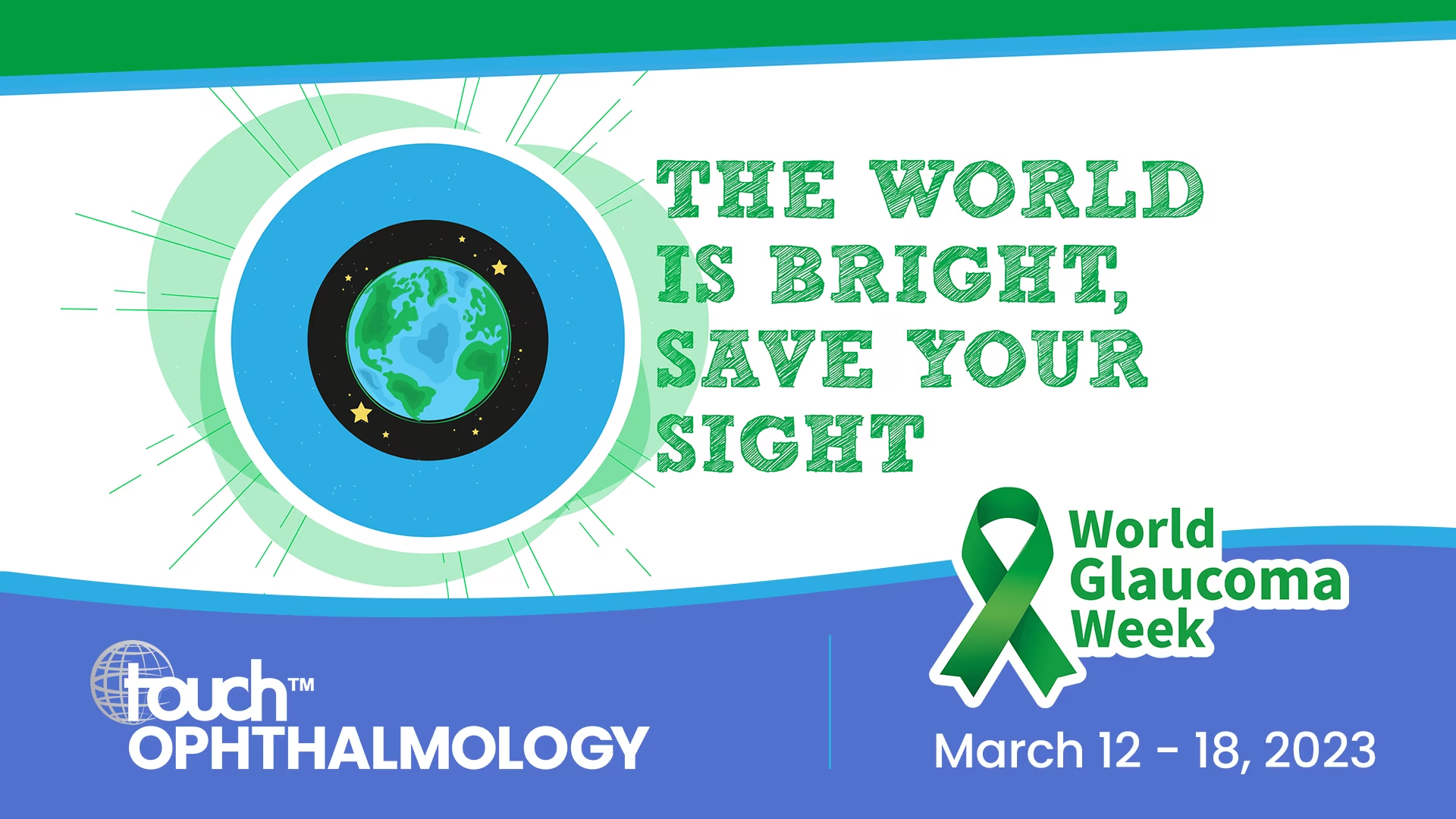
It is World Glaucoma Week this week (12 March 2023), aiming to raise awareness of this condition. It is estimated that around 80 million people have glaucoma worldwide. It’s also the second biggest cause of blindness and is irreversible. The key to preventing this outcome is prompt diagnosis and treatment. However, many are unaware they have the condition and/or lack access to essential care. This is particularly true in developing countries, making glaucoma a growing public health concern.

Our Editorial Board Member, Prof. Luis Abegão Pinto (Head of the Glaucoma Clinic at Lisbon’s University Hospital, Hospital Santa Maria, and the European Glaucoma Society Secretary), gave us his insight into why there is a need to raise awareness about glaucoma, including the challenges surrounding diagnosis and management, and how to prevent progression in unaware patients due to its asymptomatic nature in the early stages.
WATCH: Elena Sturman, President of The Glaucoma Foundation, discuss the Foundation’s objectives
WATCH: Thomas Brunner, President of the Glaucoma Research Foundation, discuss the GRF’s objectives
Q. Why is there a need for World Glaucoma Week?
Although this is one of the most prevalent neurodegenerative diseases, it doesn’t get a lot of public attention, because the vast majority of people are asymptomatic. People are only made aware when they go into the system and see an ophthalmologist. It’s silent in the vast majority of cases until late on, so there is a need for society to be aware. Because of its asymptomatic nature, you need to come to the ophthalmologist in order to receive a diagnosis.
Of course, people who have seen it in their families probably will come forward to see their ophthalmologist. But others, who can’t identify risk factors, or aren’t even aware of the disease, won’t come forward.
So this is a way to increase both people’s awareness, but also to try at a society level to get funding, get grant applications, get the whole health structure, aware that this disease exists. We should channel our energies towards improving glaucoma care.
READ: Bleb management following trabeculectomy and glaucoma drainage device implantation
Q. What are the challenges of diagnosing and managing glaucoma?
Well, there are actually two main challenges.
Diagnosing is a challenge because it needs a trained ophthalmologist and most of our current technologies will just detect abnormalities, but they will not tell us whether these abnormalities are caused by disease in general, or by a specific disease such as glaucoma. So, there is a level of technical challenge for the ophthalmologist to diagnose – and also to address the problem of how to screen, because it brings into question how we get to the people who don’t know they have it. We need to make sure our tools are good enough to detect the disease and put the red flag on those who may suffer from it. So that’s a challenge in terms of technological tools and, perhaps artificial intelligence can help us with that.
Managing glaucoma is a challenge because once you have the disease and you’re being treated, we’re still not able to reverse the damage. What the patients, and we, want most is that if you come forward with a very big scotoma, we should be able to revert that damage. We’re still not there yet, and that’s one of the main expectations from the patients.
So management is still just trying to just stop disease progression. Of course, our treatments do not reverse damage, so people don’t like drops or surgeries that will not make them see better. But it would be very good if we had patient-friendly procedures or patient-friendly drops or treatments. But the main challenge of local management – the Holy Grail, so to speak – would be reversing the damage.
I think it will exist in the future, but we’re still not there. So, in the meantime, we do need to raise awareness and to make sure that people get to their ophthalmologists to receive the treatment. Until a decent cure is invented, we need to make sure we reduce progression and people’s vision doesn’t get worse.
READ: How different diets affect the visual health of patients with glaucoma
Q. Approximately 50% of people with glaucoma are unaware that they have the disease. What can be done to prevent this?
This is very interesting because it also comes down to what makes people go to the ophthalmologist. I mean, if the disease is asymptomatic, you will only get diagnosed if you go to your ophthalmologist. So if you feel that, in your 40s or 50s, wearing glasses is simply a part of ageing, and you don’t feel the need to search for medical care, then it’s very likely that you will present – if you have the disease – at a very late stage. So what we need is awareness. We need to make sure that these vulnerable people, in their early stage of life – their forties or fifties – get screened. If you have a risk factor, you should go to an ophthalmologist. Because even though it’s very unlikely that you will have the disease when you’re forty or fifty if you do, that will be a sight-saving strategy.
We don’t know the exact social or demographic profile of the people who don’t want to get screened. We know of people who don’t want to get screened, but I think it’s mostly because they don’t have any pain and they think they see well.
So, awareness is needed. This is a silent disease and you should see a doctor sooner, not when you’re 70. Because if you’re unlucky enough to have the disease, then it’s too late. You should see the doctor while there’s still time to prevent irreversible damage, while it’s still feasible.
READ: Cross-sectional survey to determine the awareness and uptake of glaucoma surgery
Discover more on glaucoma by registering for free lifetime access to our educational activities and regularly updated content.
Disclosures: Luis Abegão Pinto has nothing to disclose in relation to this interview.
Support: The original video interview and filming was supported by Touch Medical Media Ltd. Interview conducted by Lisa Glass.
Note: This interview has been adapted to be suitable for reading, but no core information has been removed. Watch the original interview with Luis Abegão Pinto.


